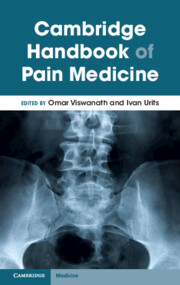Book contents
- Cambridge Handbook of Pain Medicine
- Cambridge Handbook of Pain Medicine
- Copyright page
- Contents
- Contributors
- Pain Handbook Introduction
- Part I Introduction to Pain: Pain Signaling Pathways
- Part II Common Categories of Pharmacologic Medications to Treat Chronic Pain
- Part III Chronic Pain Conditions Head and Neck
- Part IV Spine
- Part V Extremities
- Chapter 18 Carpal Tunnel Syndrome
- Chapter 19 Adhesive Capsulitis of the Shoulder
- Chapter 20 Thoracic Outlet Syndrome
- Chapter 21 Osteoarthritic Hip Pain
- Chapter 22 Osteoarthritic Knee Pain
- Chapter 23 Chronic Ankle and Foot Pain
- Chapter 24 Plantar Fasciitis
- Chapter 25 Phantom Limb Pain
- Part VI Misc
- Part VII Adjunctive Therapy
- Index
- References
Chapter 23 - Chronic Ankle and Foot Pain
from Part V - Extremities
Published online by Cambridge University Press: 01 December 2023
- Cambridge Handbook of Pain Medicine
- Cambridge Handbook of Pain Medicine
- Copyright page
- Contents
- Contributors
- Pain Handbook Introduction
- Part I Introduction to Pain: Pain Signaling Pathways
- Part II Common Categories of Pharmacologic Medications to Treat Chronic Pain
- Part III Chronic Pain Conditions Head and Neck
- Part IV Spine
- Part V Extremities
- Chapter 18 Carpal Tunnel Syndrome
- Chapter 19 Adhesive Capsulitis of the Shoulder
- Chapter 20 Thoracic Outlet Syndrome
- Chapter 21 Osteoarthritic Hip Pain
- Chapter 22 Osteoarthritic Knee Pain
- Chapter 23 Chronic Ankle and Foot Pain
- Chapter 24 Plantar Fasciitis
- Chapter 25 Phantom Limb Pain
- Part VI Misc
- Part VII Adjunctive Therapy
- Index
- References
Summary
Chronic foot and ankle pain is a common symptom of a wide variety of conditions. Nationwide burden of substantial foot or ankle pain is 24% and 15%, respectively, resulting in a significant healthcare burden. Certain conditions have more specific etiologies or risk factors, many origins of chronic pain lie in obesity, lack of exercise/foot strength, and poor foot biomechanics. Chronic repetitive damage to the surrounding ligaments of the ankle joint structure or repetitive damage to the synovial joint itself can lead to CAI and osteoarthritis, respectively. Systemic disease, acute and overuse injuries, and anatomical deformities must also be considered when evaluating for the origin of pain. For many conditions, conservative treatment with oral anti-inflammatory drugs, orthotics, and physical therapy are first-line treatment and mitigate symptoms effectively in a majority of compliant patients. There is good evidence for the use of various modalities of pharmaceutical injections before recommending a patient to a more invasive surgical procedure.
- Type
- Chapter
- Information
- Cambridge Handbook of Pain Medicine , pp. 181 - 193Publisher: Cambridge University PressPrint publication year: 2023

